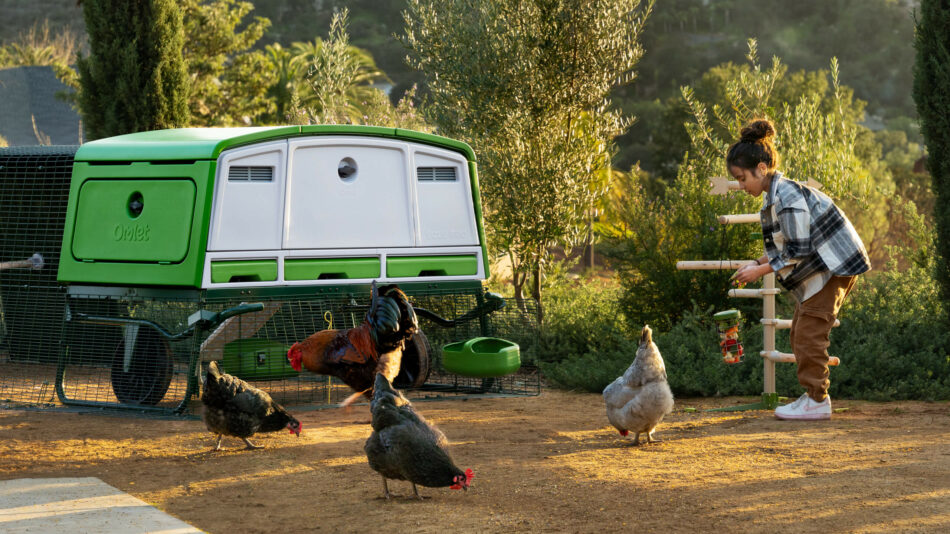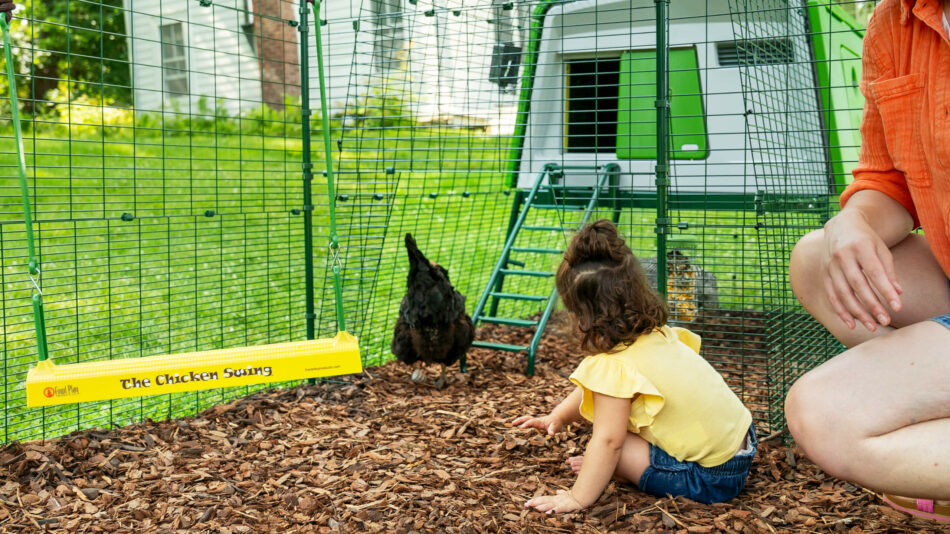What is a chicken dust bath?
What is a chicken dust bath? It sounds messy, and to an extent that’s true, but dust baths serve an important purpose in your flock. Find out exactly what a dust bath is, why dust bathing is important to your chickens, and how to make sure that your flock has access to this element of their self-care.
What is a chicken dust bath?
A chicken dust bath is exactly what it sounds like: a chicken bathing in the dirt. But your hens won’t be grabbing a robe and loofah — instead, they’ll plop down in the loosest earth they can find, and roll from side-to-side while tossing dirt over their bodies with their wings and feet. This strange act of bathing may seem like it’s getting your chickens dingier than they were before, but once a chicken is done with a dust bath, they’ll shake off the loose dirt and preen their feathers. Sometimes you’ll see your hens scratching around in the dirt to loosen the substrate enough to take a dust bath in, but you can also make and maintain a designated dust bathing area for your flock in their chicken run.
Why do chickens dust bathe?
Chickens don’t like being wet, so instead they dust bathe to remove parasites, insects, and impurities from their skin and feathers. Dust baths are an important part of chicken health, and also aids in keeping your flock cool during the summer. This routine “dusting off” helps keep your chickens’ feathers bright and full, and keeps their skin in good condition. It’s also a social activity that hens in particular enjoy in pairs or groups. It’s common to see best friends or sibling hens taking dust baths together if the area is large enough.
Dust baths are especially important for helping your hens through the heat of the summer and to aid your flock during their annual molting cycle. The dirt that your hens toss onto their plumage helps to separate individual feathers from each other. In the summer, separated feathers helps circulate more air to their body to support their natural insulating system. During their molting cycle, chickens will need to shake out loose feathers and promote new feather growth — both of which are accomplished by dust bathing.
What is the best dirt for a chicken dust bath?
If your flock free-ranges, they’ll find their favorite dust bathing spots throughout their territory. Common areas that chickens will choose to dust bathe in are:
- Garden beds with loose topsoil
- Shaded areas under trees or shrubs
- Sandboxes or other areas with loose dirt
- Ash from outdoor fire pits or burned brush piles
Chickens will happily dust bathe in any substrate that is dry and loose enough to cover their feathers. Your flock won’t want to dust bathe in areas with grass, gravel, or mulch.
You can tell where your chickens have chosen to dust bathe by the nest-shaped indentations they leave behind. Feathers are another common sighting around dust bathing areas, especially during chicken molting season. Your chickens will also choose a dust bathing area that doesn’t get saturated in the rain. If you’re making your own chicken dust bath, make sure it’s in a place protected from precipitation, and away from any chicken waterers to avoid dirt being tossed into their drinking water.
Can I make a dust bath for my chickens?
You can make a dust bath for your chickens so that they have a designated place dedicated to this self-care activity. To make a chicken dust bath, you’ll need a container or basin with high sides, such as a:
- Utility tote
- Tire
- Kiddie pool
- Livestock feeding or watering troughs
The high sides will help keep contents of the dust bath contained, but make sure the sides are low enough for your hens to hop in and out of. If your space allows for it, aim for the diameter of the container to be large enough to accommodate at least two hens, as many chickens enjoy dust bathing together.
You can make a quality chicken dust bath with a few simple ingredients. Choose a base, or combine multiple, then add other elements as desired.
Bases:
- Topsoil
- Coarse sand like contractor’s or multipurpose (not play sand, as it’s often chemically treated)
- Dirt or dried soil gathered from your yard
Additional ingredients:
- Diatomaceous earth (DE)
- Dried herbs
- Wood ash
- Peat moss
These ingredients fortify the dirt with natural insect-fighting components and immune-boosting nutrients to help keep your hens healthy and happy.
Omlet and your flock
Dust bathing may be a messy affair, but it’s vital to your flock’s overall wellbeing. But with an extra large chicken coop and run, your hens will have plenty of space to stretch out for a luxurious herbal dust bath. Hold the candles and glass of wine — opt for scratch grains in a chicken peck toy, or fresh vegetables in a Caddi Chicken Treat Holder near their dust bathing area for an ultra relaxing experience. Give your chickens a side of comfort and safety of Omlet along with their dirt, and they’ll be able to take the best dust baths any flock could hope for.
This entry was posted in Chickens


